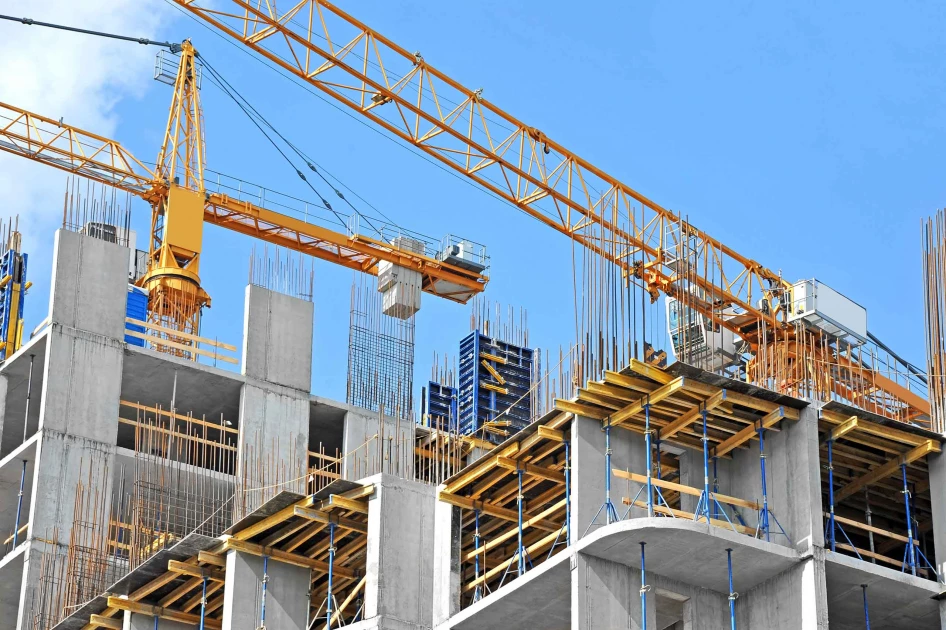The future of construction and real estate - innovation, growth and sustainability


Audio By Carbonatix
The construction and real estate industries are among the most critical drivers of global economic development, influencing urbanization, employment, and infrastructure growth.
As the world undergoes rapid demographic, technological, and environmental changes, these sectors are evolving in unprecedented ways.
With the global construction industry valued at 10.5 trillion dollars in 2024 and projected to surpass 13 trillion dollars by 2030, and real estate representing the world’s largest asset class at 374 trillion dollars, the future of these industries will be shaped by urbanization, sustainability, digital transformation, and shifting lifestyle demands.
One of the most significant forces driving construction and real estate is urbanization. The United Nations estimates that by 2050, 68% of the world’s population will live in cities, up from 56% today.
This mass migration into urban centers is fueling demand for housing, commercial spaces, and smarter infrastructure. However, the global housing deficit remains a pressing issue, with the World Bank projecting a shortage of 330 million affordable homes by 2025. At the same time, environmental concerns are pushing the industry toward green construction, with the market for sustainable buildings expected to reach 774 billion dollars by 2030.
Technological advancements are also revolutionizing the sector. Artificial Intelligence (AI), Building Information Modeling (BIM), and 3D printing are streamlining construction processes, reducing costs by 20-30%, and improving precision. The rise of PropTech (Property Technology) is transforming how real estate transactions, leasing, and management are conducted, with the market projected to hit 86.5 billion dollars by 2032.
Additionally, the shift toward remote work and hybrid office models has increased demand for flexible workspaces, co-living arrangements, and mixed-use developments that integrate residential, commercial, and recreational spaces.
While Africa currently accounts for only 4% of global construction output, it is the fastest-growing construction market worldwide, expanding at 7-8% annually.
This growth is driven by rapid urbanization, with the continent’s population expected to double to 2.5 billion by 2050. Cities like Lagos, Nairobi, and Kinshasa are expanding at 4-5% per year, creating immense demand for housing, roads, and utilities. However, Africa faces a housing deficit of over 50 million units, with Nigeria alone needing 20 million homes and Kenya requiring 2 million.
To address this gap, governments and private investors are channeling funds into large-scale infrastructure projects, often supported by China’s Belt and Road Initiative (BRI), multilateral lenders, and public-private partnerships (PPPs).
Countries like Kenya, South Africa, and Nigeria are also developing Real Estate Investment Trusts (REITs) to attract institutional capital. Despite these advancements, challenges such as land tenure disputes, high construction costs, and inadequate mortgage systems continue to hinder progress.
Without reforms in urban planning, financing, and vocational training, Africa’s rapid urbanization could exacerbate slum growth and social inequality.
Kenya stands out as a key player in East Africa’s construction boom. In 2023, the sector contributed 7.1% to GDP, while real estate accounted for 8.9%, according to the Kenya National Bureau of Statistics (KNBS).
The country is undergoing a construction renaissance, with major projects such as the Nairobi Expressway, Konza Technopolis, and the LAPSSET Corridor reshaping its infrastructure landscape. The government’s Affordable Housing Programme aims to deliver 250,000 homes annually, addressing Kenya’s 2-million-unit housing deficit, which grows by 200,000 units each year.
Beyond positive government initiatives, private developers are driving growth in satellite towns like Ruiru, Kitengela, and Syokimau, where demand for gated communities and mixed-use developments is rising.
Private and public sector partnerships are creating new real estate opportunities combining with long term financial players and affordable 100 per cent finance solutions.
The future of construction and real estate lies in technology, sustainability, and smart urban planning. Prefabricated and 3D-printed homes could reduce construction costs by 30-50%, making housing more accessible. Rent-to-own schemes and micro-mortgages can help low- and middle-income families secure homes, while diaspora investments and digital property platforms are opening new funding avenues.
Cities must also embrace transit-oriented development (TOD)—designing neighborhoods around public transport hubs to reduce traffic congestion and pollution. Smart cities leveraging IoT (Internet of Things) technology for energy management, security, and traffic control will enhance livability.
The construction and real estate sectors are at a pivotal moment. Globally, the industry is becoming more data-driven, efficient, and sustainable, while Africa is poised for a real estate revolution driven by its young population, urbanization, and technological adoption.
By embracing innovation, sustainability, and smart policies, Africa can transform its cities into models of modern urban development.
The goal should not just be to build structures, but to
create thriving communities that offer economic opportunities, environmental
resilience, and a high quality of life for generations to come. The future of
real estate is not just about bricks and mortar—it’s about building better
lives.
By Chris Diaz
Business leader


Leave a Comment